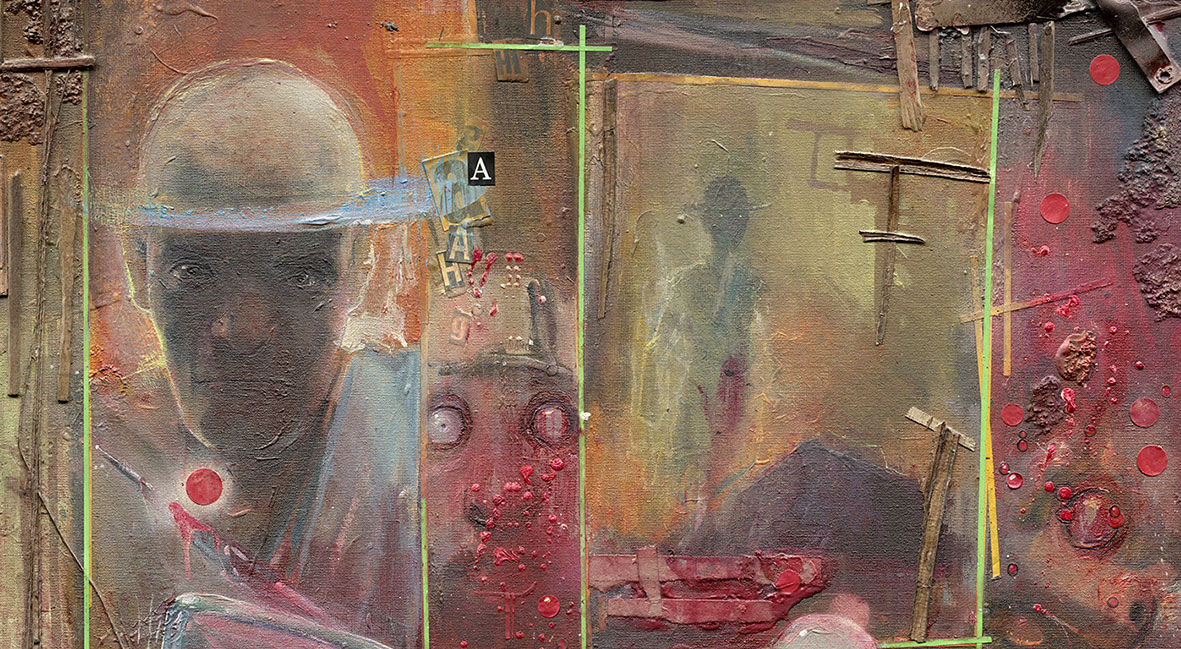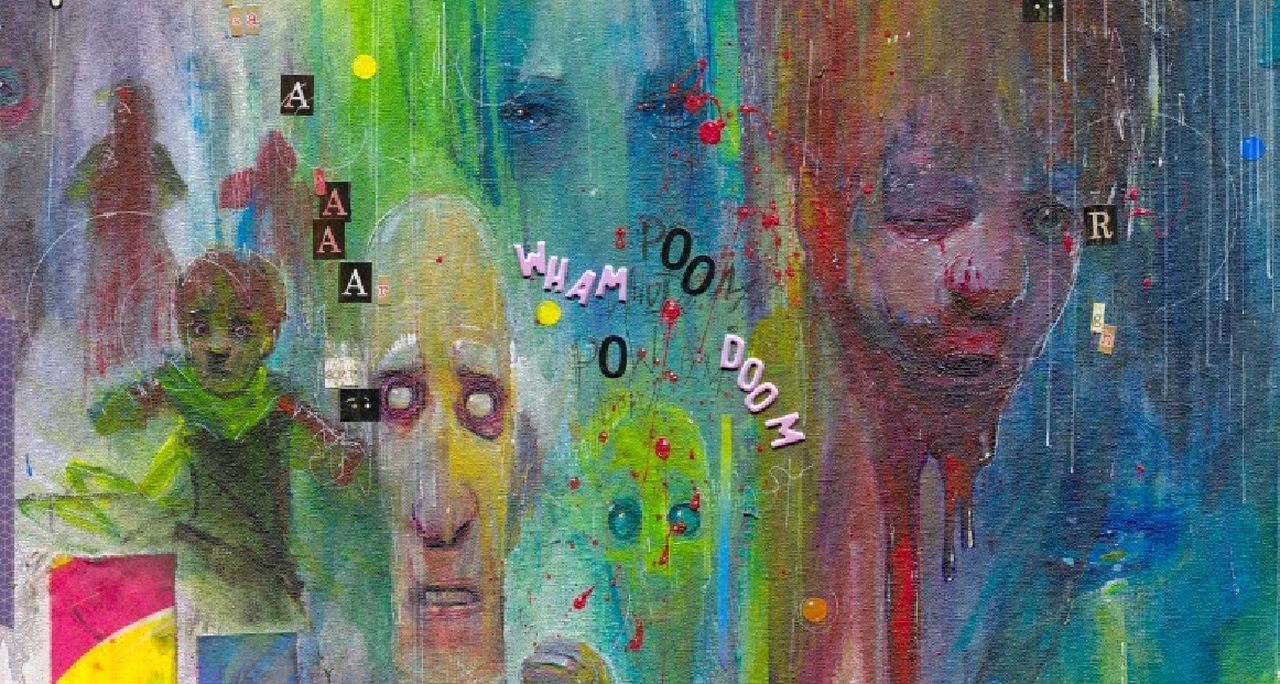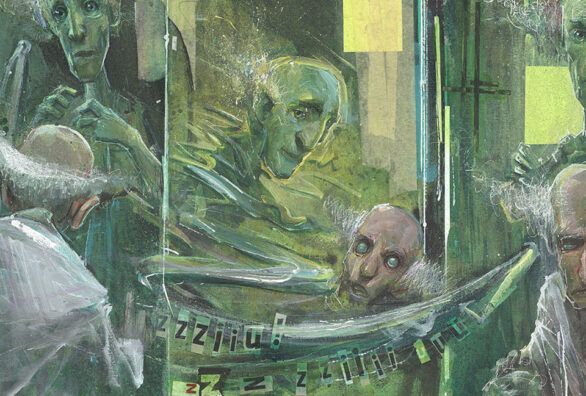
Who is a comic book screenwriter?

Tales from the Ark - Watchmaker. Karol Weber/Gedeon
A good comic script is a rather fluid concept. Because what does "good" mean? For everyone it will probably mean something different - it is known, how many people, so many tastes. However, trying to look at the issue objectively, a good comic script will be characterized primarily by two features. First, it will present an engaging story, and second, it will be technically written in such a way that the reader will have no doubt what it is about and who is who.

Tales from the Ark - Visions. Karol Weber/Gedeon
Why do we emphasize the importance of this second feature? Well, because a comic book writer does not have to be a cartoonist at all, and a visual artist does not necessarily have to write his own scripts. Just as a comic book is a fusion of literature and visual arts, there is nothing unusual in the fact that the final work is sometimes the work of two collaborators. What's more, there are co-operations that are even more complicated, such as the one by Pawel Zych and Witold Vargas, where both are cartoonists, and in cooperation they were able to create such a publishing marvel as "Slavic Bestiary."
However, this form of co-creation of a single work poses some difficulties. Namely, the comic scriptwriter's message must be clear enough for the visual artist to understand the author's vision well and be able to transfer it to paper. To this end, it happens to authors to use a little trick: before the script is written, the screenwriter writes down his vision for the comic in the form of a story and only then, already together with the illustrator, they decide on the division into scenes and frames. Of course, this is not the only correct method of writing a comic script, usually each creator develops his own way, also to communicate with the creator of the visual part. For this purpose, however, they usually serve, quite like in a classical dramatic work, didaskalia. They are a kind of footnotes, the author puts in them instructions for the director who will put his play on the theatrical stage. In the case of comic books, on the other hand, they are hints for the cartoonist, thanks to which the latter is able to faithfully reproduce the author's intention.
Some comic scriptwriters, in order to develop a thought or description, use the commentary function or color coding (in this case, you need to remember to explain in the legend what will be marked with a particular color, such as dialogue in black, frame descriptions in red, didascalia in brown). All these methods are equally good as long as both parties understand and read each other's intentions without error. If you use still other methods not mentioned here, it does not mean that you or we are doing something wrong. It's a very individual thing, so even the most unexceptional author's methods can work.
So much for communication, but after all, there are fixed elements that a reliably prepared comic script should contain? Of course there are. The first basic one is the division into scenes and frames. What does scene mean? A scene is a sequence of events that occur in the same place, so, for example, in a room, an old factory, a forest. A scene consists of frames, and their name not coincidentally refers to photography. A frame is a moment caught by the eye of the lens, so that, when the shutter button is pressed at the right moment, a photograph is created. In comics there is no photography, but there is a drawing that captures just one given moment. Therefore, the comic script must be well thought out, and the frames should contain the essence of the whole story.
Especially since we are talking here not only about drawings, but also about dialogues. Texts should give meaning and significance to images, sometimes reverse these meanings, fuel anxiety or horror, but they must not overshadow the drawings. The point is to maintain a healthy balance between the spoken issues of the characters or descriptions and the graphic layer - after all, comics are chosen largely because the images attract the viewer's eye. Thus, a comic book should not be overly "over-explained," and it is also good that it is not derivative, and that the texts used have not been grinded through the pop culture mill thousands of times.
A good comic script must include clues to the plot, place and time of the action, as well as descriptions of the characters. It is advantageous to include a roster of people right at the beginning of the script, so that from the first pages the cartoonist will know how the author's imagination presents the various characters. In this way he will give them, yes, his own artistic flair, but he will work on the canvas proposed by the author.
Such a description of people should include 2-3 sentences about who the character is, what role he plays, as well as his characterization. The latter is necessary especially if a distinguishing feature, a characteristic feature, specific only to this one person, is born in our mind. This can be an element of clothing, a scar, a mole or an eye-catching asymmetry. The illustrator should immediately know about this vision. It is worth describing the outfit as well, if it will be relevant to the story, and make it clear whether the character is positive or negative - after all, this too will be important to the artist's shaping of the character. Speaking of characters, it happens that the author includes a short spread in each scene, which tells what happens to the character, but this is, of course, only one option - if the illustrator reads your author's vision without any problems, there is no point in adding to your work.
Clear should be not only descriptions of characters, but also information about the place and time of action. Here you need to include the details you care about, especially those that will be relevant to the plot. But it doesn't stop there, it's worth the temptation to emphasize the atmosphere of individual scenes and even frames - think about the color scheme (perhaps, for example, the reminiscence should be shown as black and white or sepia images?), consider expressive onomatopoeias (contrary to appearances, it's not so easy).
Now that we know roughly what a good comic script contains, let's finally say what it should not contain. First, errors: both factual, logical, as well as stylistic, formal, spelling and punctuation errors. Eliminating them is done by two consecutive readings, which are best done with a fresh mind. You can also entrust such reading to a trusted person, who will point out inaccuracies, ambiguities or simply correct errors. The second reading is already your own work, such polishing to a high gloss. Here, however, it is not worth overdoing it, because the text can be corrected endlessly, there will always be something that could sound better, more graceful. When it's just right, it's worth saying "pas" and putting your work in the hands of an illustrator.
Related posts
Warning: Undefined variable $post_id in /home/klient.dhosting.pl/sprproject/devkomiks.sprintproject.eu/public_html/wp-content/themes/betheme-child/includes/content-single.php on line 379

Two Worlds - Rite of Passage. Karol Weber/Artur Biernacki
Warning: Undefined variable $post_id in /home/klient.dhosting.pl/sprproject/devkomiks.sprintproject.eu/public_html/wp-content/themes/betheme-child/includes/content-single.php on line 379

Tales from the Ark - Visions. Karol Weber/Gedeon